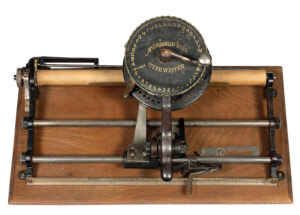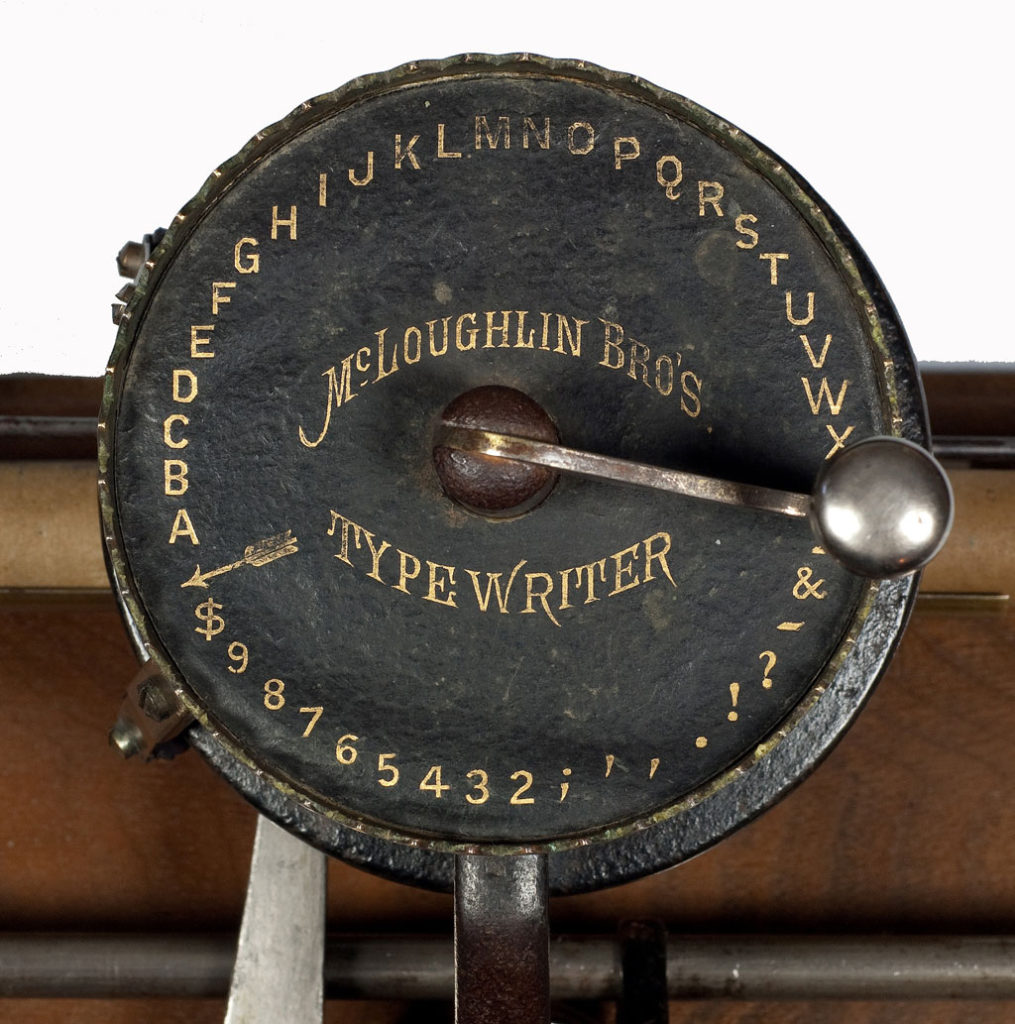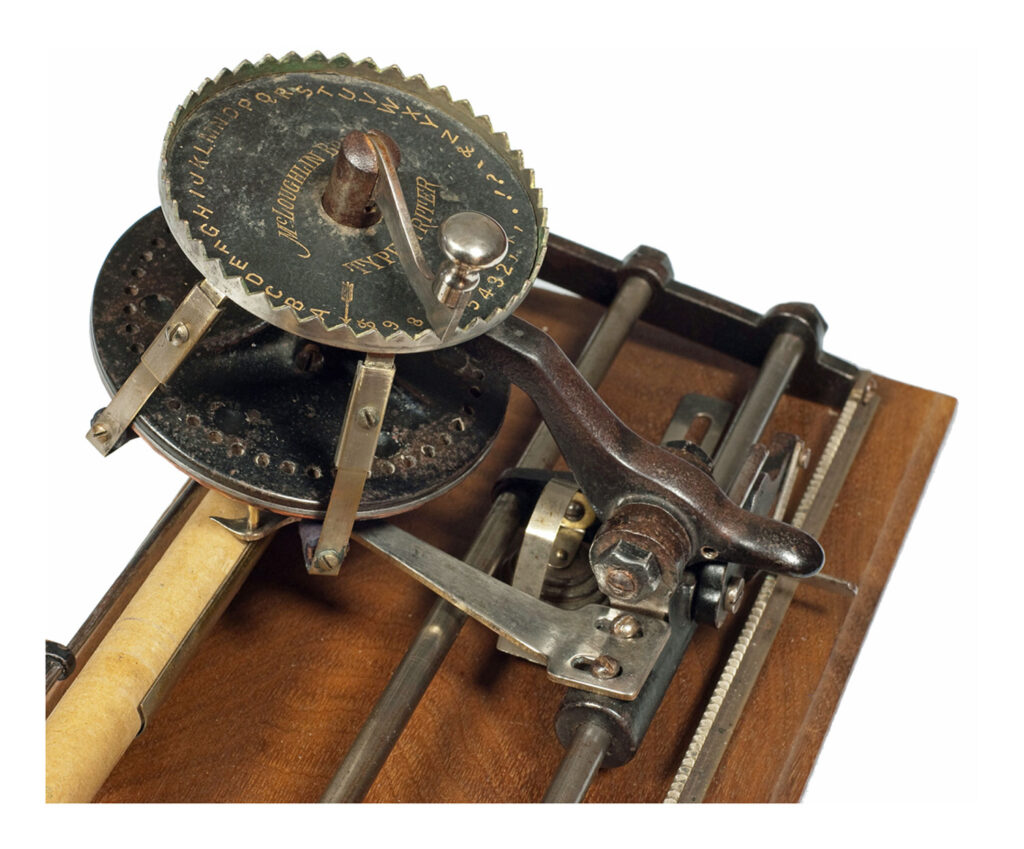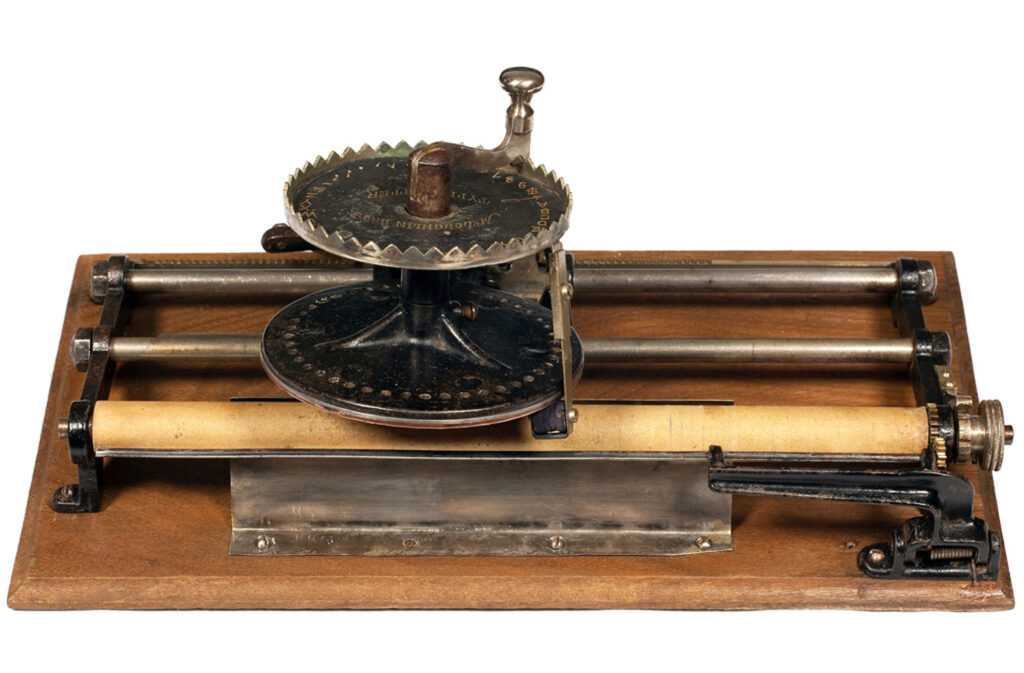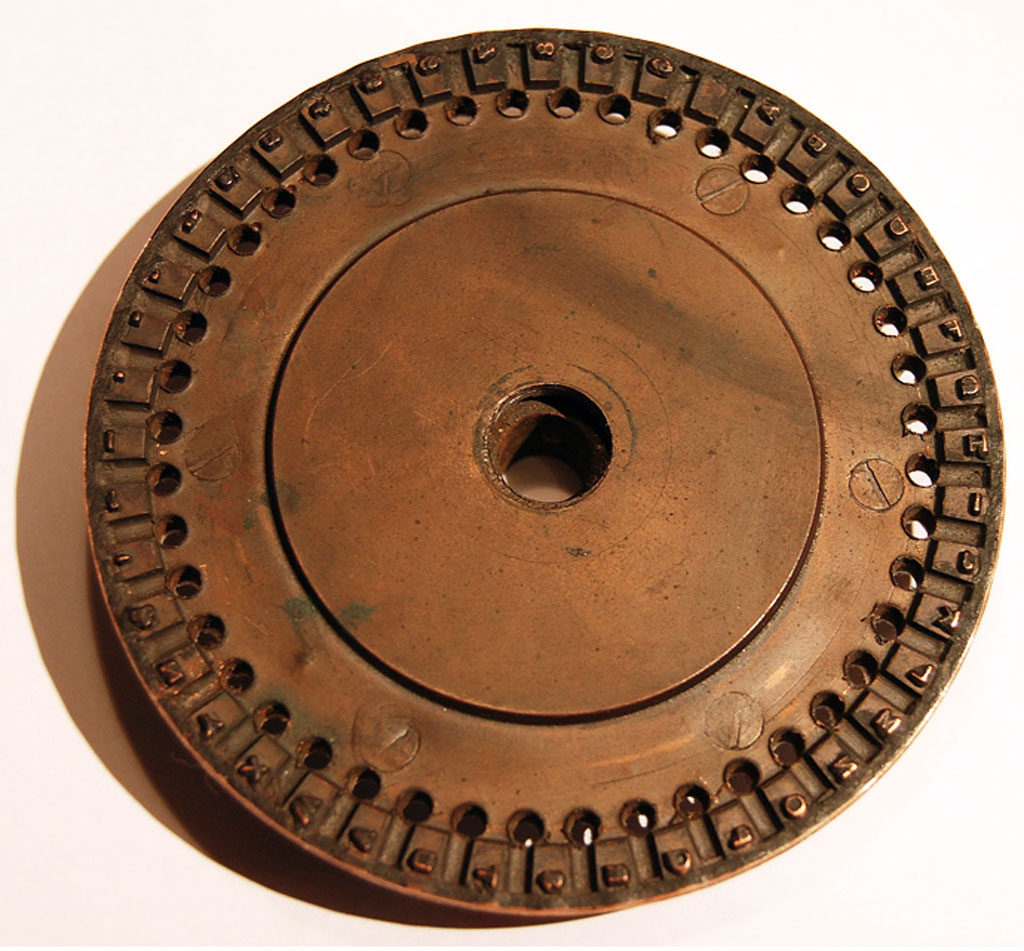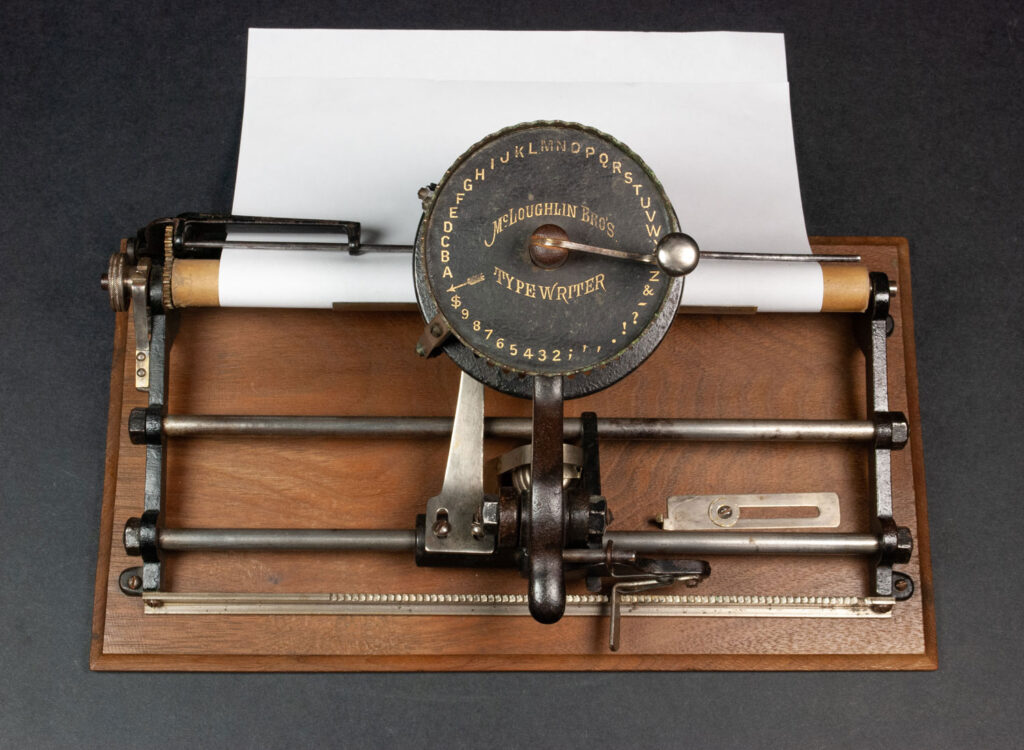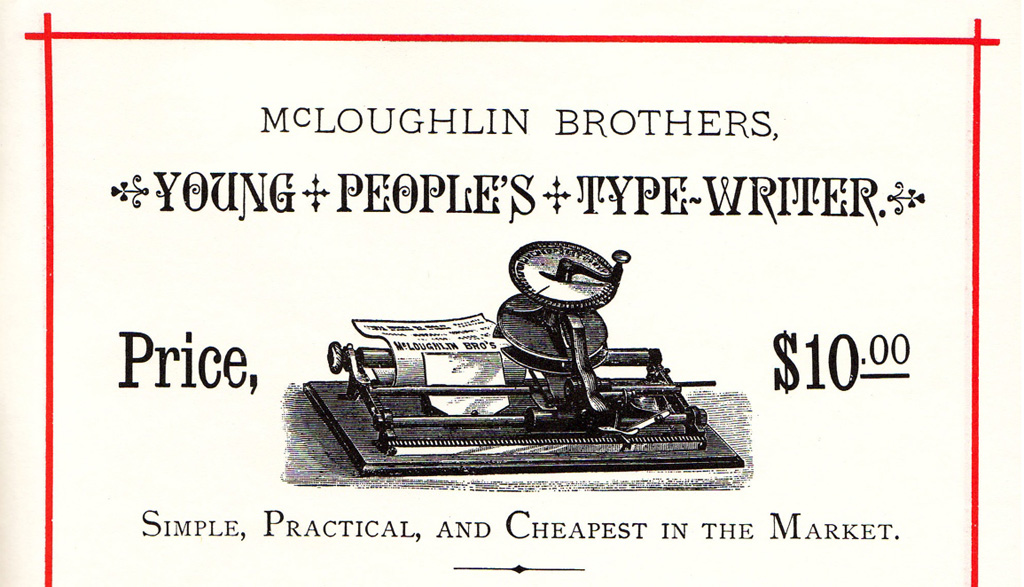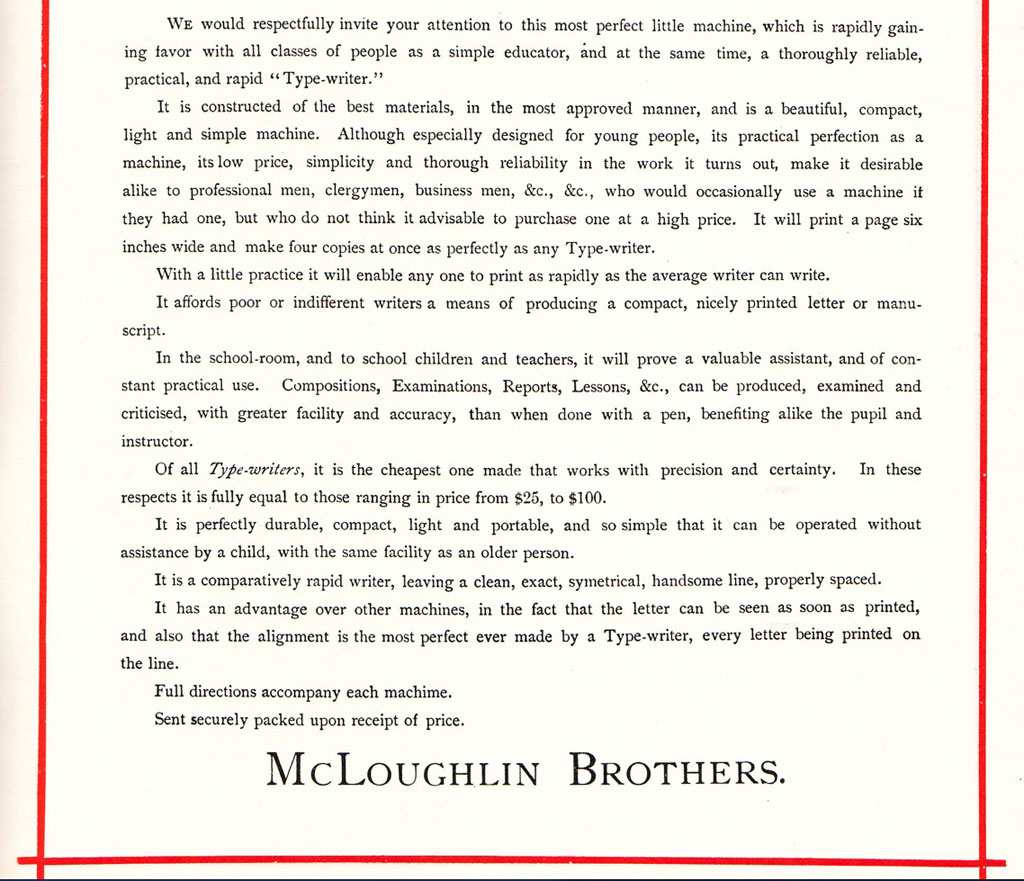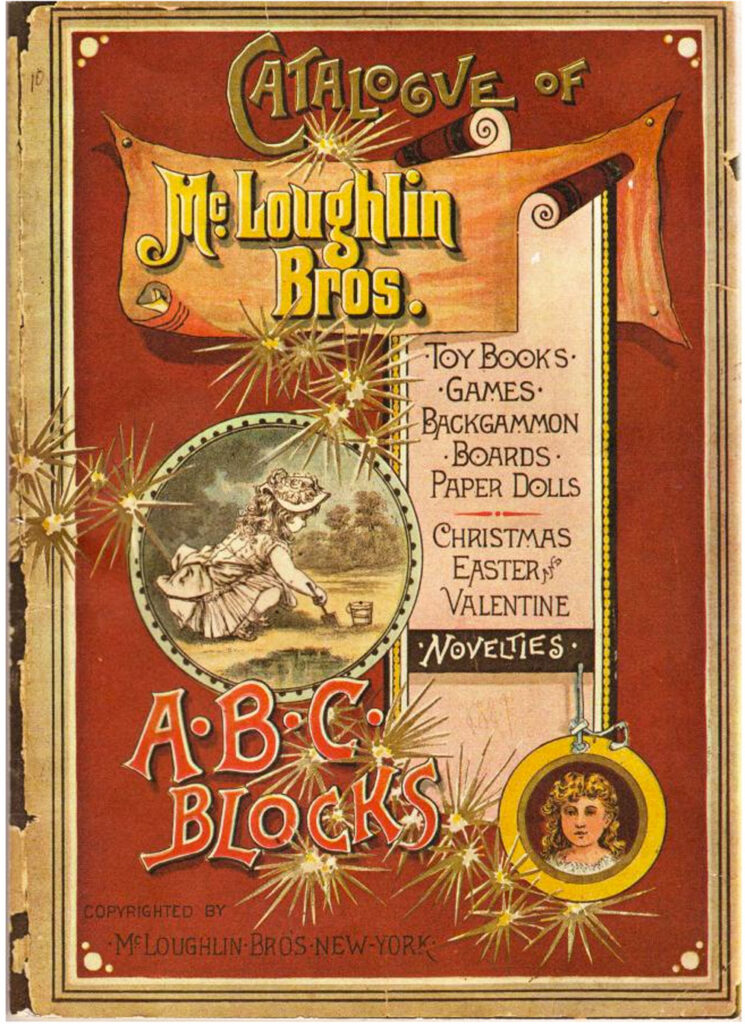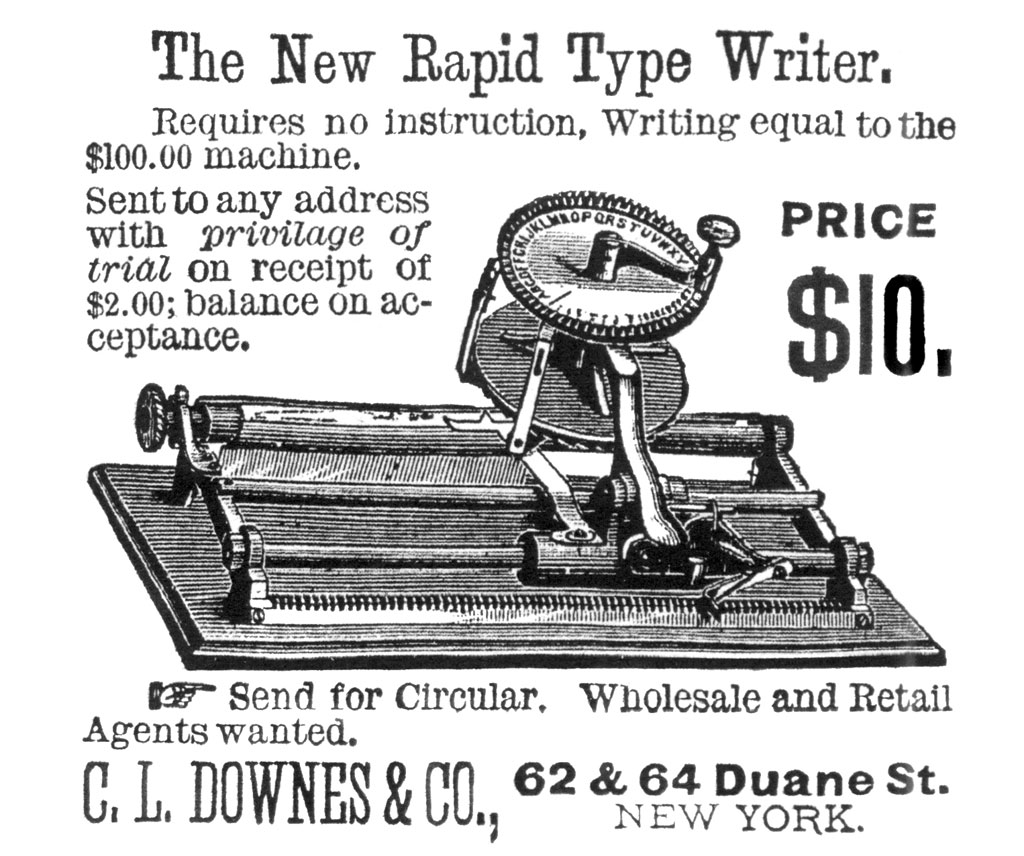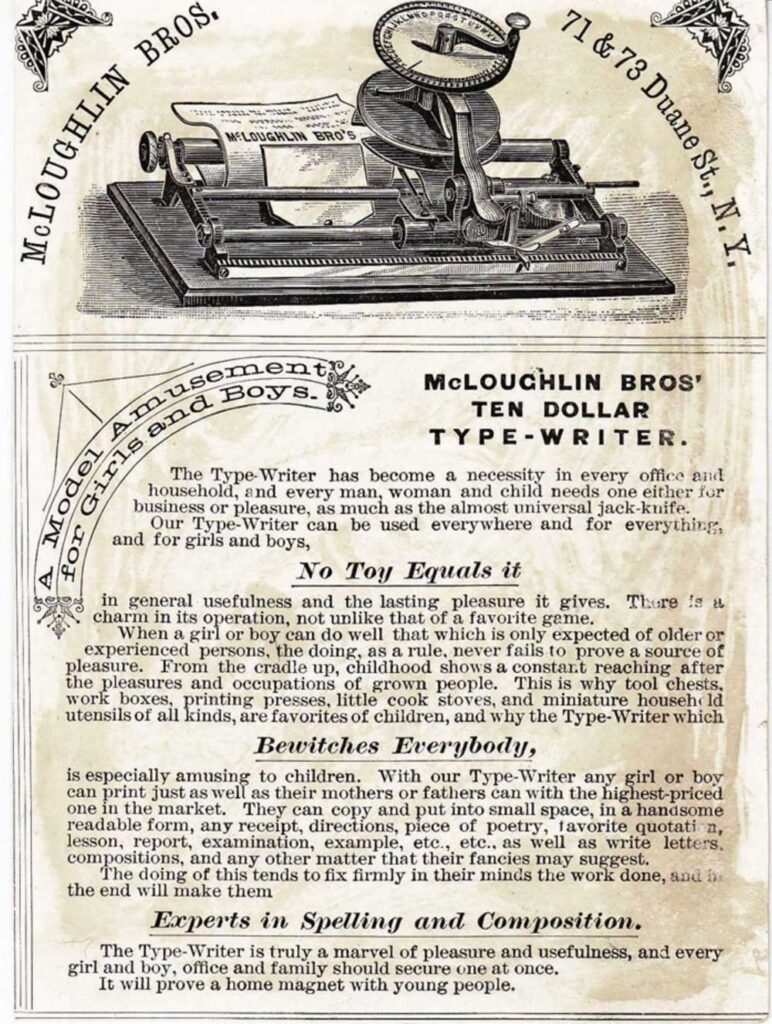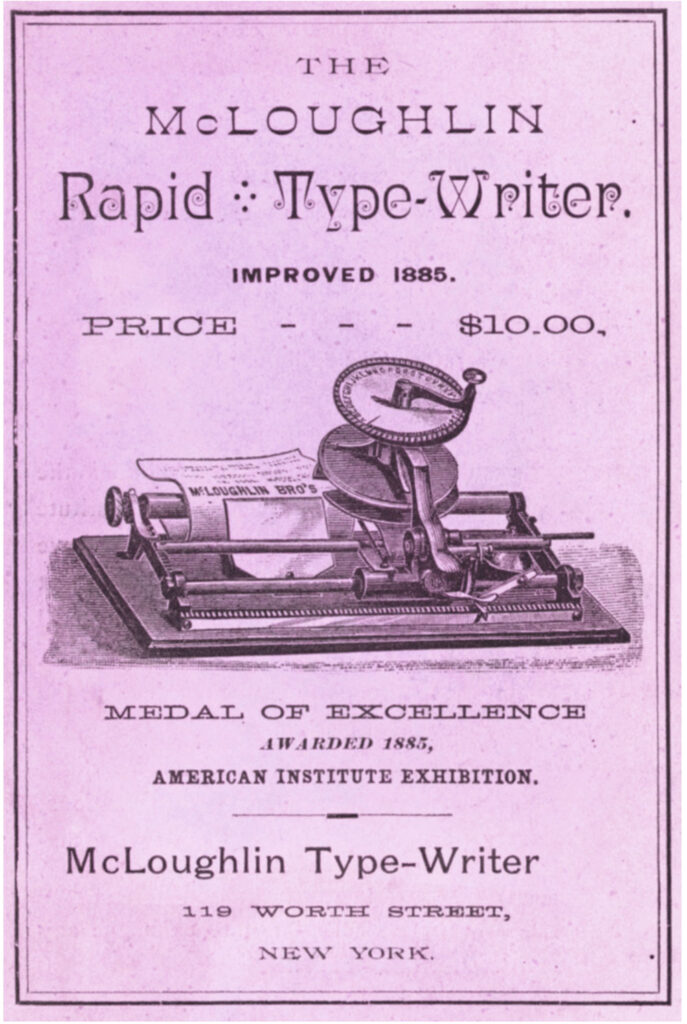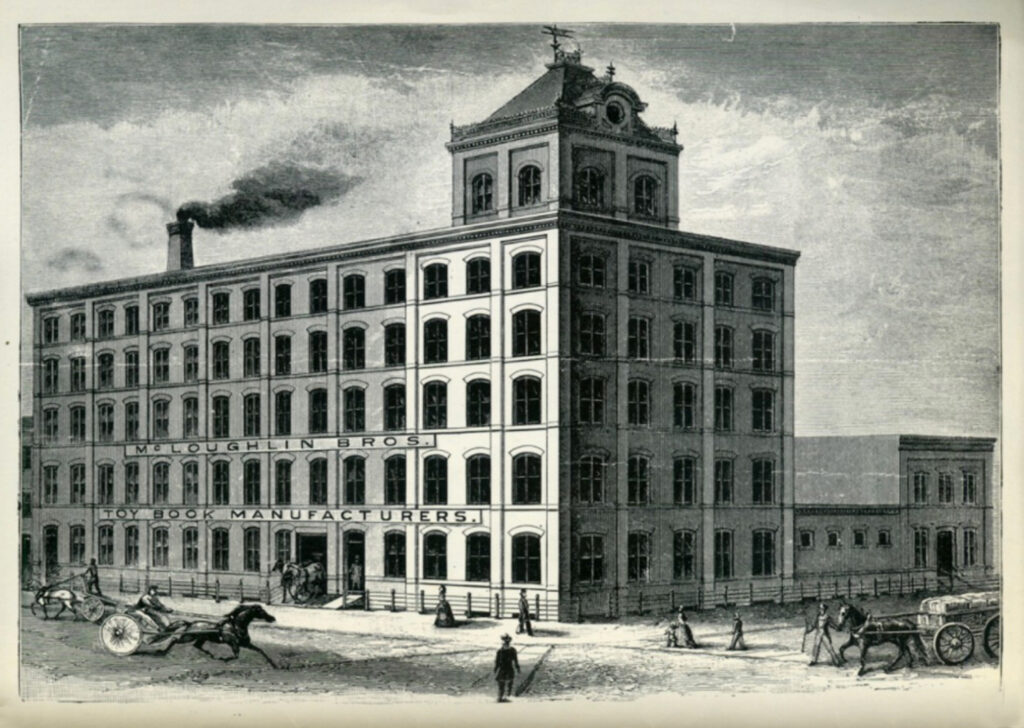The McLoughlin Brother’s Typewriter’ – An illustrated article
Little is known about the McLoughlin Brothers’ typewriter. It appeared on the market in 1884 for $10 and was marketed to both adults and children. However, it is not a toy typewriter per se, as it is solidly built from cast iron and quality machined parts.
To type, the user rotates the handle to select a character, then depresses it. This causes the entire spring-loaded carriage assembly to sink downward, bringing the type-wheel (shown below) into contact with the paper. Inking is accomplished with two felt rollers.
Here is a colorful description from the McLoughlin Brothers’ typewriter manual: “The method of printing is so simple that a child can operate it without instruction, as the movement is similar to the hand organ, as you simply turn the crank and grind out the words by the yard if necessary.”
McLoughlin Bros. Inc. began business in 1828 and was a New York publishing firm that pioneered the systematic use of color printing technologies in children’s books, particularly between 1858 and 1920. By 1886, the firm offered a wide range of items, including inexpensive chapbooks (pocket-sized books), large folio picture books, linen books, puzzles, games, and paper dolls. In 1920, they ceased game production when that division was sold to Milton Bradley, though they continued to publish picture books and a successful line of mechanical paper dolls called Jolly Jump-Ups until 1951.
The McLoughlin Brothers are considered the foremost American children’s book and game makers of the late 19th century. However, their little typewriter did not sell well, as few surviving examples exist today.
The informative full-page advertisement (shown in two sections below) is from the McLoughlin Brothers’ 1886 general catalogue. The richly illustrated cover is shown alongside it.
“Although especially designed for young people, its practical perfection as a machine, its low price, simplicity and thorough reliability in the work it turns out, make it desirable alike to professional men, clergymen, business men, etc.”
“The Type Writer has become a necessity in every office and household, and every man, woman and child needs one either for business or pleasure, as much as the almost universal jack-knife.”
“There is a charm in its operation, not unlike that of a favorite game.”
